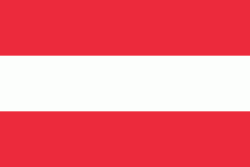Iselsberg Pass (Iselsberg)
The Iselsberg Pass, at 1209 m, is a high mountain pass in the Austrian Alps between the states of Tyrol and Carinthia. It separates the mountains of the Kreuzeck group in the south from the Schober group in the north, both parts of the Hohe Tauern range.
The pass road connects Lienz in East Tyrol with Winklern in the Carinthian Möll valley. A bridle path across the Iselsberg was already built in Roman times, to reach the mines in the Möll valley from Aguntum. The village of Iselsberg is located about 1 km southwest of the summit.
* List of highest paved roads in Europe
* List of mountain passes
The pass road connects Lienz in East Tyrol with Winklern in the Carinthian Möll valley. A bridle path across the Iselsberg was already built in Roman times, to reach the mines in the Möll valley from Aguntum. The village of Iselsberg is located about 1 km southwest of the summit.
* List of highest paved roads in Europe
* List of mountain passes
Map - Iselsberg Pass (Iselsberg)
Map
Country - Austria
 |
 |
| Flag of Austria | |
Austria emerged from the remnants of the Eastern and Hungarian March at the end of the first millennium. Originally a margraviate of Bavaria, it developed into a duchy of the Holy Roman Empire in 1156 and was later made an archduchy in 1453. In the 16th century, Vienna began serving as the empire's administrative capital and Austria thus became the heartland of the Habsburg monarchy. After the dissolution of the Holy Roman Empire in 1806, Austria established its own empire, which became a great power and the dominant member of the German Confederation. The empire's defeat in the Austro-Prussian War of 1866 led to the end of the Confederation and paved the way for the establishment of Austria-Hungary a year later.
Currency / Language
| ISO | Currency | Symbol | Significant figures |
|---|---|---|---|
| EUR | Euro | € | 2 |
| ISO | Language |
|---|---|
| HR | Croatian language |
| DE | German language |
| HU | Hungarian language |
| SL | Slovene language |















